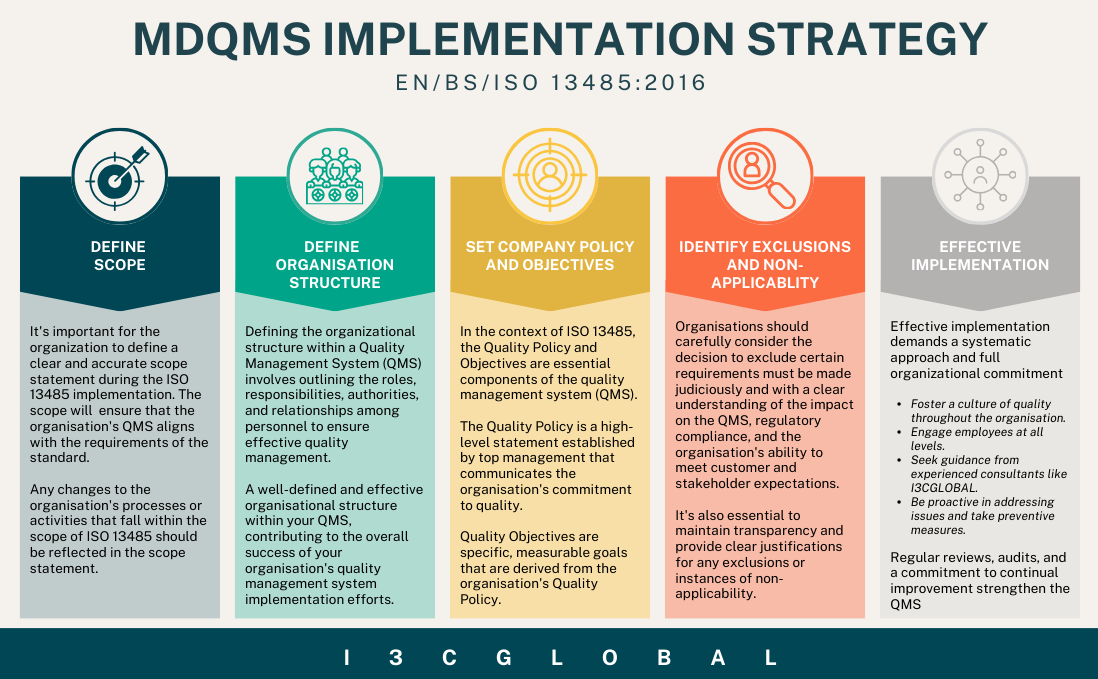ISO 13485 Certification
ISO 13485 certification is essential for medical device companies that want to demonstrate compliance with regulatory standards (regional, national, and international). Following an onsite audit, medical device manufacturers will be issued an ISO certificate by the notified body along with a CE certificate.
An MD-QMS, or medical device quality management system, is a collection of policies, processes, documented procedures, and records that must be followed by a company by a set of internal rules tailored to the organizational needs of the product or service you provide to customers and patients.
Various countries accept BS/EN/ISO 13485 certification. The latest version of the standard followed is (EN) ISO 13485:2016, published on 1st March 2016. ISO 13485 standard is structured to assist manufacturers in focusing on their system to practice and strengthen their risk management approach and meet regulatory requirements.
Would you like to know more about our services? Submit your email below for a response in 2 minutes
ISO 13485 Certification Process
Companies that have been certified to ISO 13485 will have better control over their processes and the continual improvement possible in all areas of the organization.
The EN ISO 13485 certification enables companies to establish a quality management system in all stages of product realization, including medical device design, development, manufacturing and production, servicing, installation, and market surveillance. The benefits of being an EN ISO 13485-certified company are the following:
- Manages the quality of a medical gadget throughout its life cycle.
- Continuous improvement of medical device product realization processes
- Ensures medical device safety and continual device improvement.
- Reduces operational costs and increases market share.
- Enhances customer satisfaction.
- It helps in the CE marking for medical devices and in-vitro device.
ISO 13485 & 14971 Relationship
The relationship between ISO 13485 and ISO 14791 is that both standards work together to establish an effective QMS. ISO 13485:2016 Section 4.1.2 b states that “apply a risk-based approach to the control of the appropriate processes needed for the quality management system.” This organization should adopt a risk-based approach to every process that affects quality.
ISO 13485:2016 Certification (QMS) focuses on the regulatory and customer requirements of medical devices. As a part of this, QMS requires risk analysis to be done, keeping ISO 14971 as the guidance document. This means ISO 13485 looks to ISO 14971 for guidelines for risk analysis and implementing risk control measures, thus ensuring the safety of the device during the product lifecycle.
ISO 13485 and 62304 Relationship
ISO 13485 provides guidelines for the quality management system in the medical device industry. IEC 62304 provides the requirements for the medical device software development cycle. IEC 62304, which can be used in conjunction with 13485, offers a platform for the life-cycle processes necessary for the safe design, development, and maintenance of medical device software.
As a basic platform, IEC 62304 assumes that medical device software is developed and maintained within a QMS such as ISO 13485 but does not require an organization to be certified in ISO 13485. Therefore, IEC 62304 can be a supplement to the 13485 standard.
ISO 13485 Implementation
Not all organizations are the same; some make class I devices, some make class III devices, and some manufacture IVD devices. Implementation of ISO 13485 certification and its requirements are different from organization to organization. Generally, the following are the major stages of ISO implementation:
- Understanding the standard requirements
- Gap analysis of the current system and the requirements
- Stagewise planning of the QMS establishment
- Providing the required training for the QMS team
- Documentation of the QMS, including the records
- Internal Quality Audits and CAPA
- Management review meetings
Effective implementation is followed by continuously monitoring and measuring the processes to ensure they are effective. Take corrective actions for any non-conformities, address any issues and raise CAPA. Regularly review the Quality Management System to ensure the system remains effective and make improvements as necessary. By following these steps, you can effectively implement the system and achieve ISO 13485 certification.

Comments
Post a Comment